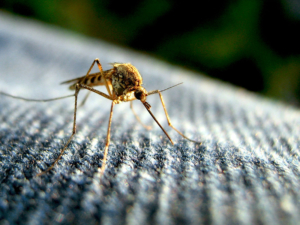How Genetically Modified Mosquitos Can Fight Malaria in Tanzania
 Tanzania is a high-risk country with 4.1% of global malaria-related deaths in 2020. While 93% of the Tanzanian population resides in malaria transmission areas, researchers are working to address the country’s current malaria epidemic.
Tanzania is a high-risk country with 4.1% of global malaria-related deaths in 2020. While 93% of the Tanzanian population resides in malaria transmission areas, researchers are working to address the country’s current malaria epidemic.
Plasmodium falciparum is the most common form of malaria contracted in Tanzania, accounting for 96% of infections. While previous preventative measures such as insecticide-treated nets and indoor residual spraying have not been completely successful when combating high malaria cases, many researchers in Tanzania believe genetically modifying mosquitos shows promise.
How Do Genetically Modified Mosquitos Work?
The transmission of malaria is a cycle between humans and mosquitos. After mosquitos ingest parasites from human blood, those parasites mate in the mosquito’s gut and infect the next bit human. Genetically modified mosquitos, or GMMs, could potentially stop parasites from reproducing in a mosquito’s gut and prevent the parasites from spreading malaria when feeding on human blood. GMMs are mosquitos that have had genes modified to prevent the transmission of malaria and dengue.
There are two types of modifications that researchers have utilized to address high malaria numbers: population suppression and population replacement. Population suppression is a strategy that aims to reduce the mosquito vector population so pathogen transmission rates decrease. Population replacement focuses on modifying mosquitos, so they no longer have the ability to transfer malaria or dengue pathogens.
When GMMs are set free into the natural environment, the goal is that they pass mutations on to other mosquitos through reproduction and disrupt female mosquito fertility.
Potential Modifying Approaches
The self-limiting approach relies on recurring releases of GMMs without the malaria-causing gene in hopes that they will pass the modification to future mosquito generations through natural mating. However, some researchers are modifying mosquitoes to be sterile, meaning they’ll be unable to pass the mutation to offspring. They will die before the malarial parasites are infectious.
As the effectiveness of self-limiting approach modifications decreases, researchers will need to re-release GMMs periodically. One benefit of this strategy is that researchers can reverse the impact of GMMs by suspending future releases.
A self-sustaining approach is more invasive as this strategy works to ensure the modifications pass through natural breeding indefinitely. The modification will transmit pathogens permanently or until the mosquito population ceases. Minor GMM releases will be necessary but on a smaller scale compared to the self-limiting approach.
However, self-sustaining strategies are more difficult to reverse as researchers design the modifications to remain stable within the mosquito population.
Theoretical Advantages
GMM technologies have addressed issues that previous disease control strategies have had difficulty preventing. By releasing GMMs, they can transmit the modifications to hard-to-reach breeding sites. With this method, researchers in Tanzania rely on the natural behaviors of GMMs.
While nets and indoor residual spraying might fail to prevent mosquitos from escaping control methods, GMM technologies can expand modifications to those mosquito populations. In addition, implementing a concrete plan to target only mosquito vector populations will prevent the usual environmental hazards experienced when using broad pesticides.
One of the most important advantages is that the effects of GMMs are not reliant on social or economic factors. As a result, people residing in areas with GMM treatments receive protection from vector-borne diseases without the need to make unaffordable lifestyle changes. With fewer malarial infections, people living in poverty can focus on improving other aspects of their life rather than health issues.
Current Limitations and Uncertainties for the Future
As the research and implementation of GMMs are relatively new, researchers in Tanzania have a few concerns.
One issue is relying on GMMs to carry mutations to hard-to-reach larval breeding areas. It is difficult to verify that a male GMM has passed the mutation onto the female mosquito. Tracking the results of GMMs in the wild can be difficult, especially with the self-sustaining approach. GMMs can evolve to build a resistance to mutations or lose efficiency as time goes on.
Some scientists at the World Health Organization have questioned how implementing GMMs impacts “human health, animal health, biodiversity and water quality.” As a result, there is a need for more research to address risk assessment and risk planning to determine whether the benefits outweigh the cons.
– Mikada Green
Photo: Flickr
